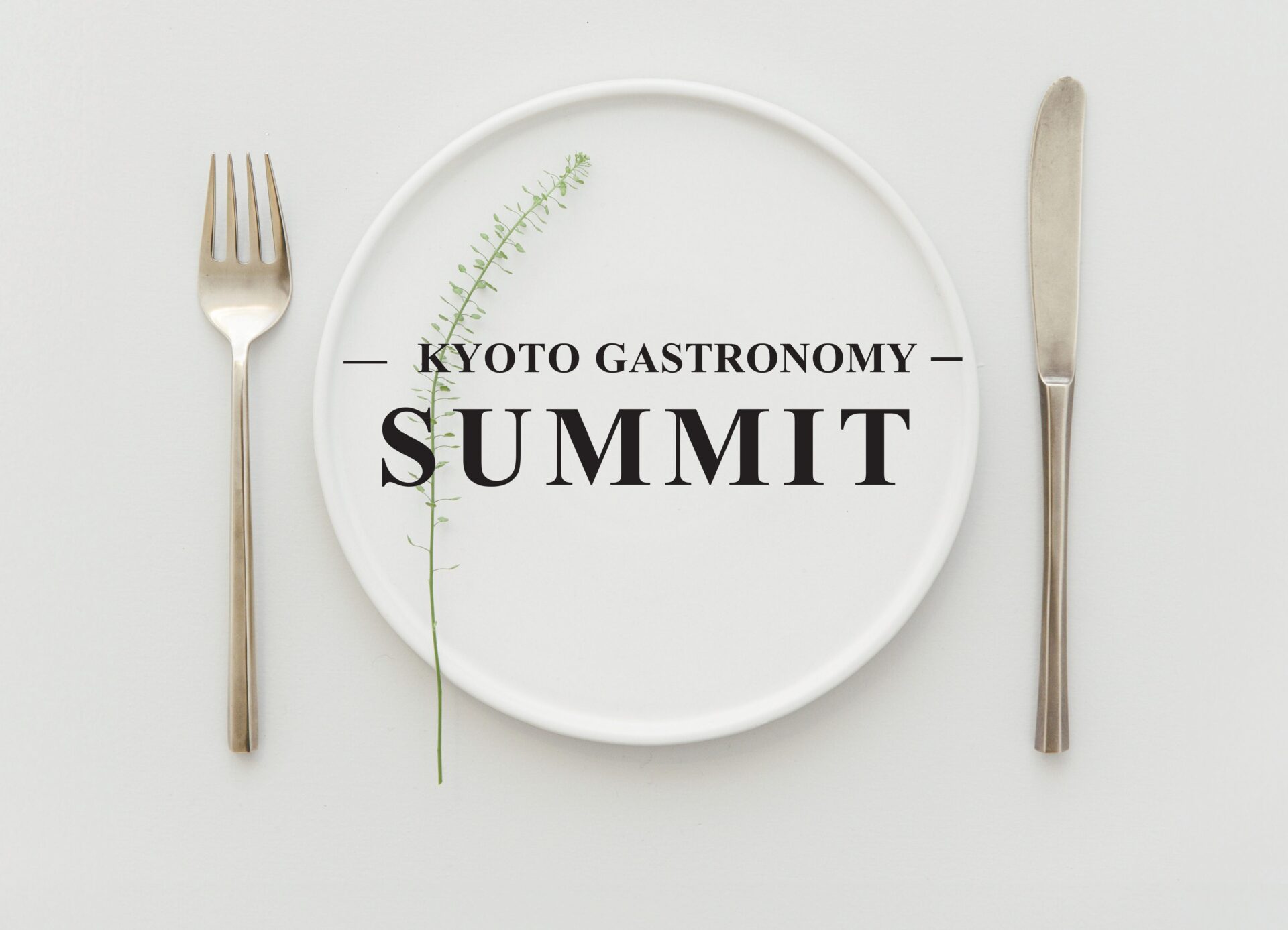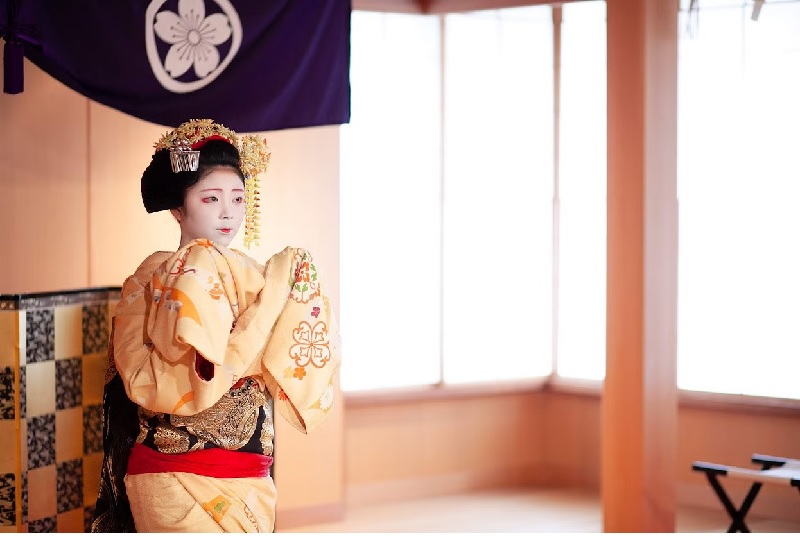traditional culture
Latest content and event information
-
What is Kyoto Gastronomy Tourism?
"GASTRONOMY TOURISM" is the experience of traveling and enjoying food that is nurtured by the local climate, customs, traditions, and history."KYOTO GASTRONOMY" aims to rediscover the food culture content scattered throughout Kyoto Prefecture, and to create and increase awareness of new food tourism tours centered on the diverse regional characteristics of Kyoto.
Official website:https://kyoto-gastronomy.com/
KYOTO GASTRONOMY PROJECT Management Office (inside Kyoto Shimbun COM)
Tel.075-241-6171In February 2025, the KYOTO GASTRONOMY SUMMIT and KYOTO GASTRONOMY AWARD will be held at Daigoji Temple. The KYOTO GASTRONOMY SUMMIT is a gourmet festival where you can enjoy the whole of Kyoto Prefecture in one go, through a luxurious collaboration between top chefs representing the essence of Japanese cuisine: Kyoto cuisine, and Italian and French chefs active throughout the prefecture. Participants will be asked to taste the collaborative menu and vote for it. Why not rediscover food culture together and spread the charm of the entire Kyoto Prefecture? After the award ceremony, you will be guided to a special tour of the Sanboin Temple and Garan of Daigoji Temple.
▶KYOTO GASTRONOMY AWARD・・・
The Kyoto Gastronomy Awards will be established in 2023 with the aim of rediscovering and supporting the appeal of Kyoto Prefecture's food-related culture and tourism resources. In five areas, including the four areas of "Another Kyoto (Sea Kyoto, Forest Kyoto, Tea Kyoto, Bamboo Village Otokuni)" and the "Special Kyoto" area dotted with lesser known attractions, newly devised seasonal dishes (collaboration menus) will be judged and voted for by the general public, and the "best Another Special Kyoto" will be announced and awarded.
Food culture contentgastronomyKyoto GastronomyKyoto GastronomyFood TourismspecialhistoryKyoto sightseeingFood culturetraditional culture
-
Ide TownTsuzuki CountyKizugawa City
Digital Stamp Rally: Exploring Heian Era Pilgrimage Routes and Uji Tea History Spots
A digital stamp rally exploring historical spots along the Yamashiro Kodo will be held from November 23, 2024 (Saturday) to January 31, 2025 (Friday). Collect stamps from 3 or more locations to enter a prize draw for gift certificates at Teo Terrace Ide. Participation is free!
During this period, you can also purchase discounted tickets to experience Heian Era HATSUSE pilgrimage, and tickets for a special event on December 7 (Saturday). Don't miss out on these opportunities!
Kyoto CastleHatsuse PilgrimageStamp RallyTeo Terrace Ide orFukujuen Tea Merchant StreetYamashiro Old TrailHeian travel attireUji teahistoryKyoto sightseeingexperiencetraditional culture
-
① Visit to the Silk Fabric Museum (time required: about 15 minutes)
The White Silk Fabric Museum is a museum specializing in white kimono fabrics. We exhibit about 50 types of white fabrics carefully selected from the 200 types and 3,000 patterns that Itoyuki has woven so far for post-dyeing (dyed kimono), where fabric is woven from raw silk and then dyed later. You can actually touch the white fabrics, which have various characteristics depending on the production area and type of thread, and see their texture and beautiful luster. We will introduce the process of making one bolt of white fabric, including cocoon production by domestic silkworm farmers and information on the amount of cocoons needed for a kimono.
② "Handloom" Experience (Time required: approx. 15 minutes)
Our in-house instructor will demonstrate the handloom weaving process and explain how the warp and weft threads work. Afterwards, you can enjoy the experience of weaving using a handloom.
3. Kinsai Yuzen Workshop (Time required: approx. 1 hour 30 minutes)
Enjoy the experience of dyeing pure silk fabric, a high-quality material used in kimonos, with the Yuzen technique and finishing with gold leaf. Our in-house instructors will provide careful instruction, so even beginners can participate with confidence. The completed work will be framed and handed to you, so you can take it home as a keepsake.

Link KyotoKyoto experiencetraditional craftsLINK KYOTOKyoto sustainable tourismsustainableKyoto sightseeingKyoto culturetraditional culture
-
A long-established inn founded in 1912"Sumiya Ryokan"
The calm, sukiya-style building stands out in Sanjo Fuyacho, the heart of Kyoto. From the guest rooms and teahouse, you can enjoy the beautiful changes of the seasons in the courtyard.At the matcha experience at Sumiya Ryokan, you will be taught how to make and drink matcha, and you can try making it yourself or drink the matcha you made with your family or friends.You can have a fun time.
Sumiya Ryokan is also famous as a tea ceremony inn with deep ties to the Urasenke school. There are five tea rooms in the building, the most famous of which is Gyokutoan. It was named by the 14th head of the Urasenke school, Tantansai, after his predecessor, who was born in the year of the rabbit.
This plan is,Private plans for groupsFor those who are not comfortable sitting upright, we also have chair seats available. Please take this opportunity to come to Sumiya Ryokan.
The official website of Sumiya Ryokan can be found here
Private experiencePrivate ExperienceSumiya RyokanMatcha ExperienceKYOTOKyoto experienceTea ceremonylong-established storeMatchatea roomLINK KYOTOhistoryexperienceKyotogenuineKyoto culturetraditional culture
-
▶Kyoto dance performance by geisha and maiko
Kyomai (Kyoto Mai Dance) will be performed in the Inoue style by a geiko or maiko. A rare opportunity for visitors to see these graceful dance up close, allowing them to experience the permanent exhibit more intimately. Two Kyomai songs will be performed for a total of about 15 minutes.
▶Permanent Exhibition on Kagai Art Culture
An introduction to the world of geiko, maiko and their culture through a diverse range of exhibits, from exquisite hand-painted Yuzen kimono and Nishijin brocade obi sashes, to personal belongings and makeup used by maiko. Exhibits feature precious items such as kanzashi hair ornaments for each season and black crested formal kimono, which are rarely seen in the Gion quarter. Along with photographs conveying the unique atmosphere of the Kagai district, immerse yourself in this secretive yet glamorous world.-In the Kagai districts of Kyoto, women who perform traditional dance and music in ozashiki banquet rooms and on stage and entertain guests are referred to as geiko (and not geisha). Women training to become geiko are called maiko.
Hanamachi Art MuseumKyoto DanceKYOTOLink Kyotomaikogeishatraditional craftsLINK KYOTOKyoto tourism moralsKyoto sustainable tourismsustainablecarbon neutralKyoto sightseeingKyotoKyoto cultureEmpty-handed sightseeingEntertainment districttraditional culture
-
"Okazaki-an" is a Japanese-style mansion built by "Ueba Hide", a famous geisha in Kyoto, to live out the rest of her life with her husband "Shundo Koji", who was a producer at Toei, and their daughter "Takako".
It is a luxurious building with modern interior design and a Noh stage made entirely of cypress, which was rare at the time, and the windows offer a panoramic view of the torii gates of Heian Shrine and Mt. Daimonji.
This is a luxurious plan where you can enjoy a meal while watching a maiko perform on the Noh stage in this elegant setting.
Limited to one group per time slotSo, after your viewing, you can take commemorative photos, chat with the maiko, and have them all to yourself, which will surely be an unforgettable memory of your trip to Kyoto.
Japanese ResidenceOkazakianDance AppreciationOkazakiKYOTOLink KyotoKyoto experiencespecialmaikogeishaLINK KYOTOKyoto sightseeingKyotogenuineKyoto culturetraditional culture
-
It has been passed down as one of Japan's traditional arts, along with flower arranging and tea ceremony."The Art of Incense"is an art form in which fragrant wood is burned and the scent is used to evoke poetry or scenes.
In this plan, you can learn about the culture of incense and participate in an incense gathering where you can light several different types of incense and try to guess which ones have the same scent.
The "Oko no Kai" is a descendant of the 12th Emperor Keiko.Hosted by the head of the Sanbon Oeda school of incenseThe location is a mansion built by Japanese painter Kansetsu Hashimoto as a studio for his own work."Hakusamuraso"Why not experience this elegant culture that has continued since the Heian period?
IncenseCulturetraditionIncense ceremonyIncense ClubHeadmasterSanpin Oeda School of Incense CeremonyHakusamurasoSakyo WardKyoto CitycultureKYOTOLink KyotoKyoto experienceLINK KYOTOhistoryexperienceKyotogenuineKyoto culturetraditional culture
-
Educational travel Inquiry program
[Experience Course] Fukujuen Tea and the Happiness of Everyday Life
Tea creates a dialogue between people. When you want to have a conversation with someone, it is customary to ask them to go for tea, but tea encourages conversation between people and deepens bonds. We Japanese are aware of this.
Let us once again focus on tea and remember the richness of daily life based on dialogue, not conflict. In Japan, a room for gathering has long been called a "chanoma." People and families can converse in a space with tea, and we can remember the richness of the heart that comes from drinking tea and talking.
Through something as familiar as tea, we hope to provide an opportunity to think about the desire for peace within ourselves and about the nature of communication in modern times, where human relationships are becoming increasingly tenuous.
Fukujuen, a long-established tea shop in Kyoto that co-developed the well-known Suntory Iyemon, will explain the history and value of tea.Kyoto experienceUji teatea roomLINK KYOTOhistorytraditional cultureSDGs
-
Tips for a sustainable tourism in KYOTO
Your sustainable journey, starting in Kyoto. Your respectful journey starting in Kyoto.
Your thoughtful journey, starting in Kyoto. Your comfortable journey, starting in Kyoto.
Enjoy your trip with Kyoto sustainable tourism.
Click here! !
Link Kyototraditional craftsLINK KYOTOKyoto tourism moralsKyoto sustainable tourismsustainablecarbon neutralEmpty-handed sightseeingtraditional culture
-
Educational travel Inquiry program
[Educational Program] Kyoto College of Traditional Crafts Traditional Business Inheritance Program
We will hear about the history of Kyoto and traditional crafts, as well as the current and future prospects. We hope that you will be able to use this information to think about your own future by learning about the connection between school studies and society. You will also learn about how crafts are a part of our daily lives.
MakieSculptureKyoto hand-drawn yuzentraditional craftsLINK KYOTOKyoto culturetraditional culture
















 Kyoto experience
Kyoto experience Contact us by phone
Contact us by phone Contact by email
Contact by email